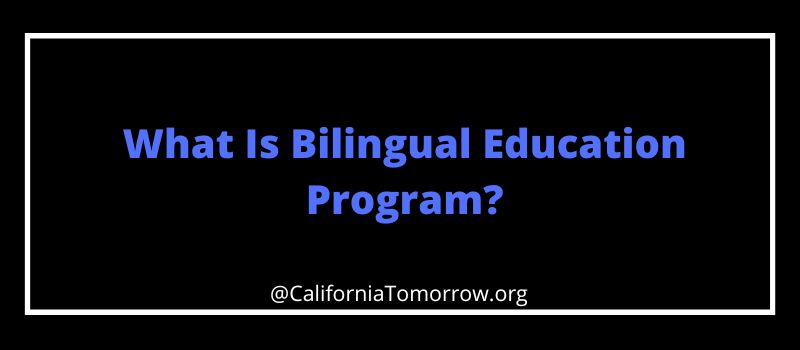Bilingual education programs have become increasingly popular across the globe, and for good reason.
These programs provide an effective way for individuals to learn two or more languages, which can be a valuable skill both personally and professionally.
If you’re interested in bilingual education programs but aren’t sure exactly what they entail, keep reading.
What Is Bilingual Education Program? – Everything Revealed
In this article, we’ll explore exactly what bilingual education programs are, the benefits they offer, and how they differ from other language learning approaches.

Goal of Bilingual Education
The goal of bilingual education is to help students become proficient in two or more languages. By doing this, you can ensure that your students have the best access to both languages and are able to communicate effectively in both.
Now let us start with the proper definition of Bilingual education program.
Definition of Bilingual Education Program
Bilingual education is a form of education that provides instruction in two languages. It often utilizes the native language of the student as the primary language of instruction, while also incorporating the second language into the curriculum.
Types of Bilingual Education
There are several different types of bilingual education, including dual language programs, developmental bilingual education, and transitional bilingual education.
>> Read more in detail <<
Why Bilingual Education Is Important?
Bilingual education programs aim to provide students with meaningful instruction in two languages. These programs strive to promote bilingualism and biliteracy, improve academic achievement, and foster appreciation and respect for cultural and linguistic diversity.
The ultimate goal of bilingual education is to ensure that students are prepared to interact and communicate effectively in multiple cultures, both domestically and internationally.
Programs can vary in their approach, from teaching only one language to incorporating both languages into the curriculum.
In any case, the ultimate goal is to create an environment in which students can become proficient in multiple languages and develop the necessary skills to be successful in a global economy.
>> Read More on Quora <<
Benefits of Bilingual Education Program
Many studies have shown that bilingual education can be beneficial to both native English and non-native speakers:
- Research has found that learning two languages helps students gain a better understanding of both their first language and English, leading to improved academic performance in all subjects.
- Additionally, bilingualism is associated with cognitive benefits such as improved problem-solving skills and enhanced creativity.
- Bilingualism has also been linked to greater cultural awareness and improved communication skills, which can be beneficial in a globalized world.
- An essential component of bilingual education is the use of strategies that support both English language learners and native English speakers in the classroom. For example, teachers may use scaffolding techniques such as providing visual aids or employing cooperative learning activities. These strategies can help create a more inclusive learning environment where all students feel valued and have an equal opportunity to succeed.
- Bilingual education can also help foster a sense of identity and community among language learners.
- By providing instruction in both English and their native language, educators are able to respect students’ cultural backgrounds and help them develop an appreciation for different cultures.
- Finally, there are many practical benefits to bilingual education. For instance, students who learn in two languages often have better reading comprehension and problem-solving skills than those with monolingual backgrounds.
>> Read more in detail <<
What Is Bilingual Education Act of 1968?
>> Read Here <<
History of Bilingual Education [Overview]
Bilingual education has a history that stretches back centuries, with communities around the world teaching in multiple languages.
In the United States, bilingual education began in the early twentieth century as an effort to teach English to immigrants and their children who were not proficient in it.
During this period, many programs had strict English-only policies–which did not support the development of the student’s native language.
During the 1960s and 70s, however, a new wave of bilingual education programs began to emerge. These programs were rooted in equal rights and reflected an understanding that different languages have value.
Programs like these sought to ensure that all students had access to high-quality education regardless of their native language abilities.
Since then, bilingual education has evolved from a single-language program into a variety of approaches that include dual language immersion programs, bilingual-bicultural programs, and two-way bilingual programs.
Although the goals and approaches have changed over the years, the underlying purpose of bilingual education remains the same: to provide students with the opportunity to learn English and their native language and to support academic achievement and social-emotional development.
Conclusion: What Is Bilingual Education Program?
Bilingual education programs can be a fantastic way to develop proficiency in multiple languages, enhance cognitive development, and open up various career opportunities.
However, it’s essential to understand the differences between bilingual education programs and other language learning approaches and to choose a program that aligns with your own goals and needs.
So, if you’re considering a bilingual education program, start by doing your research and exploring the various options available to you.
Ultimately, the investment you make in bilingual education will be well worth it in the long run.